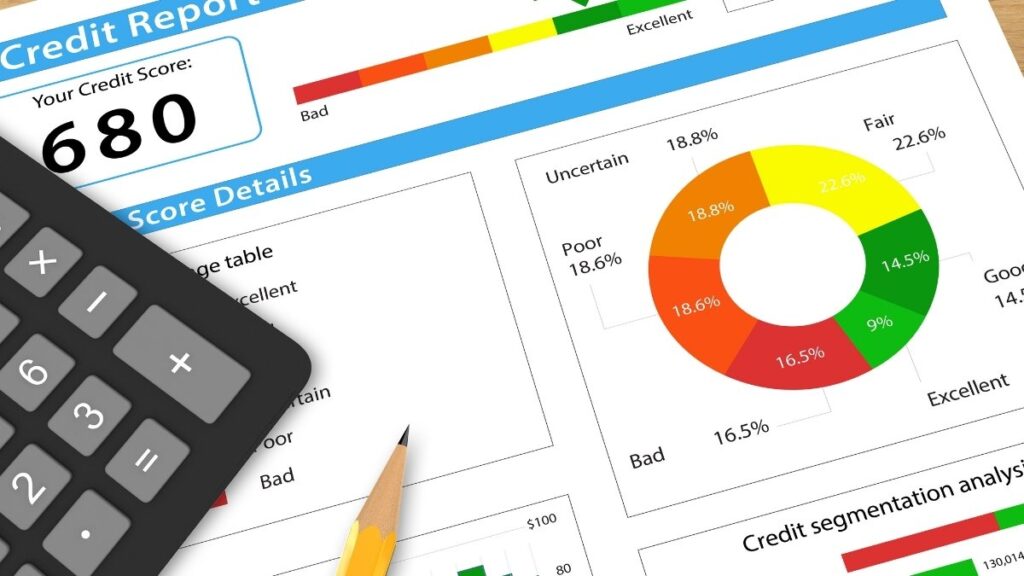
Sixty-five percent of Americans often considered ‘middle class’ – those earning more than 200 percent of the federal poverty level – are struggling financially today and don’t expect that to change for the remainder of their lives.
The shocking truth? Many middle-class families are following conventional financial wisdom that sounds responsible but is actually preventing wealth accumulation. These seemingly smart money moves bankrupting middle class households aren’t obvious scams or get-rich-quick schemes.
They’re widely accepted advice that creates middle class financial mistakes with devastating long-term consequences. Here are 12 commonly accepted “smart” financial moves that are secretly bankrupting middle-class families, plus actionable alternatives for real wealth building.
12 Money Mistakes That Keep Middle-Class Families Broke (And How to Fix Them)
You work hard. You make decent money. But somehow, you’re still living paycheck to paycheck.

Sound familiar? You’re not alone. Most middle-class families make the same money mistakes over and over. These mistakes seem small at first. But they add up fast and keep you trapped in financial stress.
The good news? Once you know what these mistakes are, you can fix them. Here are the 12 biggest wealth-killers that middle-class families need to stop doing right now.
1. Raiding Your 401(k) to Buy a House
The Problem: You want to buy a house but don’t have enough for a down payment. So you borrow from your 401(k). It seems like free money, right?

Wrong. This is one of the worst money moves you can make.
When you take money out of your 401(k), you lose something huge: compound growth. That $10,000 you withdraw today could have grown to $50,000 by retirement. You’re stealing from your future self.
Plus, there’s a nasty surprise. If you lose your job, most companies require you to pay back the entire loan within 60 days. Can’t do it? The whole amount becomes taxable income, plus you pay a 10% penalty.
What to Do Instead:
- Look into FHA loans (only 3.5% down)
- Check VA loans if you’re a veteran (0% down)
- Search for first-time buyer programs in your area
- Save up the old-fashioned way
Your retirement account should be off-limits. Period.
2. Buying Whole Life Insurance as an Investment
The Problem: An insurance salesman tells you whole life insurance is a great investment. You’ll have insurance AND build wealth at the same time. Sounds perfect.

But here’s what they don’t tell you. Whole life insurance is one of the worst investments you can make.
The guaranteed return is around 2% per year. The projected return is about 5%. But here’s the kicker: you’ll lose money for the first 5 to 15 years because of huge fees and commissions.
The insurance company takes 50% to 110% of your first year’s premium as commission. That’s money that never gets invested.
Let’s Do the Math: Say you pay $197 per month from age 35 to 67. With whole life insurance, you might end up with $200,000.
But if you bought cheap term insurance and invested that $197 in mutual funds averaging 11% returns? You’d have over $693,000.
What to Do Instead:
- Buy term life insurance (much cheaper)
- Invest the difference in index funds or mutual funds
- Only consider whole life if you’re wealthy and need it for estate planning
3. Becoming House Rich, Cash Poor
The Problem: Everyone says a house is a good investment. So you buy the biggest house you can afford. You put down 20% and stretch to make the monthly payments.

Now 46% of your income goes to housing costs. You have a nice house but no money for anything else. You can’t save for retirement. You can’t invest. One job loss and you’re in trouble.
This is called being “house rich, cash poor.” And 73% of people feel this way at least some of the time.
Your house isn’t making you wealthy. It’s keeping you broke.
The Real Problem: All your money is tied up in one asset. You can’t diversify. You can’t take advantage of other investments. And if home prices drop? You’re stuck.
What to Do Instead:
- Keep housing costs under 30% of your income
- Consider a smaller house or different area
- Think of your house as shelter, not an investment
- Put extra money into stocks and bonds, not extra house payments
4. Death by a Thousand Subscriptions
The Problem: Netflix. Spotify. Amazon Prime. Disney+. The gym. Software subscriptions. Food delivery services.

Each one seems cheap. But they add up fast. The average American now spends $273 per month on subscriptions. That’s $3,276 per year.
And it’s getting worse. Subscription costs have jumped 15% in just two years. Why? Because companies know you’ll forget about them.
Here’s the scary part: 48% of people have forgotten to cancel a free trial before it became a paid plan. These companies count on your forgetfulness.
What to Do Instead:
- List all your subscriptions (check your bank statements)
- Cancel anything you haven’t used in 30 days
- Set calendar reminders for free trial end dates
- Share family plans when possible
- Choose one streaming service, not five
That $273 per month invested at 10% returns would give you $427,000 in 30 years. Is Netflix worth half a million dollars?
5. Paying Credit Card Minimums Forever
The Problem: You have a $5,000 credit card balance at 18% interest. The minimum payment is $125. You think you’re being responsible by paying on time every month.

But here’s what happens when you only pay minimums: It takes 30+ years to pay off that $5,000. And you’ll pay over $13,000 in total.
Credit card companies love minimum payers. You become their cash cow for decades.
The Math That Will Shock You:
- Balance: $5,000
- Interest Rate: 18%
- Minimum Payment: $125
- Time to Pay Off: 30+ years
- Total Paid: $13,000+
What to Do Instead:
- Pay as much as possible above the minimum
- Focus on highest interest rate cards first
- Consider a balance transfer to a lower rate card
- Stop using credit cards until they’re paid off
Every extra dollar you put toward debt saves you multiple dollars in interest.
6. Hoarding Too Much Cash “For Safety”
The Problem: You’re scared of investing. So you keep 12+ months of expenses in a savings account earning 0.5% interest.

You think you’re being smart and safe. But inflation is eating your money alive. At 3% inflation, your $50,000 emergency fund loses $1,500 in buying power every year.
Meanwhile, 62% of Americans say they’re behind on emergency savings. But some people go too far the other way.
The Sweet Spot: Keep 3-6 months of expenses in a high-yield savings account. Anything more should be invested.
What to Do Instead:
- Calculate your true monthly expenses
- Keep 3-6 months in savings (only)
- Invest the rest in index funds
- Don’t let fear of loss cause guaranteed loss to inflation
7. Avoiding Stocks Because They’re “Risky”
The Problem: You think stocks are gambling. You’ve heard horror stories about people losing money. So you keep everything in “safe” savings accounts and CDs.

But here’s what’s really risky: not investing at all.
Over the long term, the stock market has never failed to beat inflation. The S&P 500 has averaged about 10% annual returns over the past 90+ years.
Sure, there are bad years. But there are way more good years. And time smooths out the bumps.
The Numbers Don’t Lie:
- $100 in savings account for 30 years at 1% = $135
- $100 in stocks for 30 years at 10% = $1,745
What to Do Instead:
- Start small with index funds
- Invest regularly, regardless of market conditions
- Don’t check your balance every day
- Remember: time in the market beats timing the market
The biggest risk isn’t losing money in stocks. It’s not having enough money when you retire.
8. Chasing High-Yield Savings Over Retirement Accounts
The Problem: You find a savings account paying 4% interest. You’re excited! So you put all your extra money there instead of your 401(k) or IRA.

Big mistake. That 4% gets taxed as regular income. After taxes, you might keep 3%. And you’re missing out on huge tax advantages.
Here’s What You’re Missing:
- 401(k) match from your employer (free money)
- Tax deductions now
- Tax-free growth for decades
- Roth IRA tax-free withdrawals in retirement
The Real Math: $500/month in savings account at 4% for 20 years = $183,000 $500/month in Roth IRA at 8% for 20 years = $247,000 (tax-free)
What to Do Instead:
- Max out your 401(k) match first
- Then contribute to a Roth IRA
- Use high-yield savings only for emergency funds
- Don’t let the tax tail wag the investment dog
9. “I Work Hard, So I Deserve This” Spending
The Problem: You just got a raise. You’ve been working overtime. You feel like you deserve something nice. So you upgrade your car, buy expensive clothes, or take an expensive vacation.

This is lifestyle inflation in disguise. Every time your income goes up, your spending goes up too. You never get ahead.
Real wages have grown less than 0.5% per year. But the cost of living keeps rising faster. When you increase spending with every raise, you’re actually going backwards.
The Trap:
- Get raise → Increase spending → No extra savings
- Get bonus → Buy something big → Back to paycheck-to-paycheck
- Work overtime → “Reward” yourself → Overtime money gone
What to Do Instead:
- Treat raises like they don’t exist
- Put all raise money directly into investments
- Reward yourself with free or cheap activities
- Remember: your future self deserves financial freedom more than your current self deserves stuff
10. Obsessing Over Credit Scores Instead of Net Worth
The Problem: You spend hours optimizing your credit score. You keep small balances on cards for “utilization.” You open new accounts to improve your credit mix. You track your score weekly.

But credit scores don’t make you wealthy. Rich people with millions in the bank don’t worry about credit scores.
The Truth: Time spent on credit optimization is time not spent on wealth building. You’re polishing pennies while dollars fly by.
What to Do Instead:
- Pay all debts in full every month
- Don’t carry balances for “utilization”
- Focus on increasing income and investments
- Use credit as a tool, not a goal
Good credit helps you get better rates. But net worth determines your actual wealth.
11. Buying Extended Warranties on Everything
The Problem: Every time you buy something, they offer an extended warranty. Your phone, your car, your appliances. It’s “only” $10 per month. Seems like good protection.

But extended warranties are profit machines for companies. They wouldn’t sell them if they lost money.
Most extended warranties pay out less than 20% of what customers pay in. The other 80% is pure profit for the company.
The Math: If you’re buying warranties on everything, you might spend $100+ per month. That’s $1,200 per year. Over 10 years, that’s $12,000.
What to Do Instead:
- Self-insure with your emergency fund
- Buy quality products that last longer
- Only buy warranties on very expensive items you can’t afford to replace
- Research reliability ratings before buying
12. Emotional Spending Disguised as “Investments”
The Problem: You’re stressed about money. So you buy an expensive course on making money online. Or you join a premium gym because you’re “investing in your health.” Or you buy expensive equipment for a hobby you’ll “monetize someday.”

You tell yourself these are investments. But they’re really emotional spending with a fancy excuse.
Retail therapy makes you feel good for about 10 minutes. Then you’re back where you started, just with less money.
Common “Investment” Purchases:
- Online courses you never finish
- Gym memberships you never use
- Equipment for businesses you never start
- “Networking” events that cost money
- Premium apps and tools you don’t need
What to Do Instead:
- Wait 48 hours before any non-essential purchase
- Ask: “Will this directly increase my income or net worth?”
- Start with free resources first
- Focus on investing in actual investments (stocks, bonds, real estate)
The Bottom Line: Small Changes, Big Results
These 12 mistakes seem small by themselves. But together, they can cost you hundreds of thousands of dollars over your lifetime.
The good news? You don’t have to fix everything at once. Pick one mistake you’re making right now. Fix that first. Then move to the next one.
Building wealth isn’t about making huge money. It’s about avoiding these common traps and being consistent with saving and investing.
Your future self is counting on the decisions you make today. Make them count.
Start Here:
- List your current subscriptions and cancel unused ones
- Check if you’re getting your full 401(k) match
- Set up automatic investing so you pay yourself first
- Stop buying extended warranties on new purchases
Small moves today. Big wealth tomorrow. That’s how the middle class builds real financial security.






